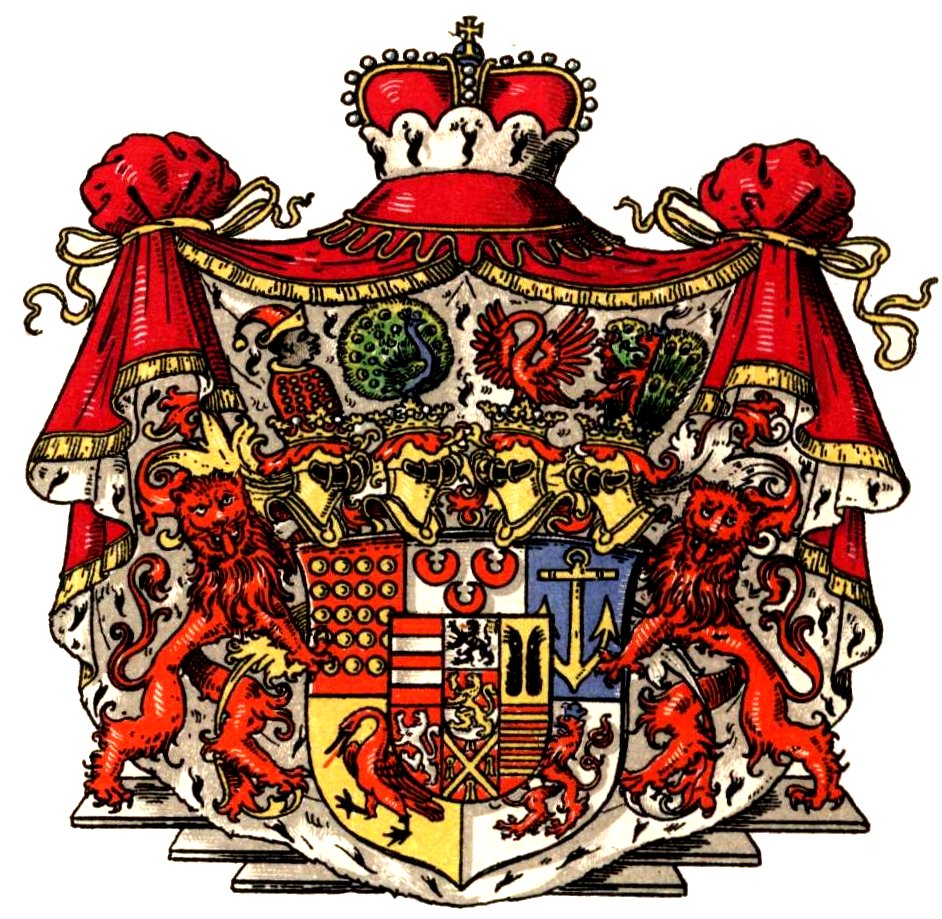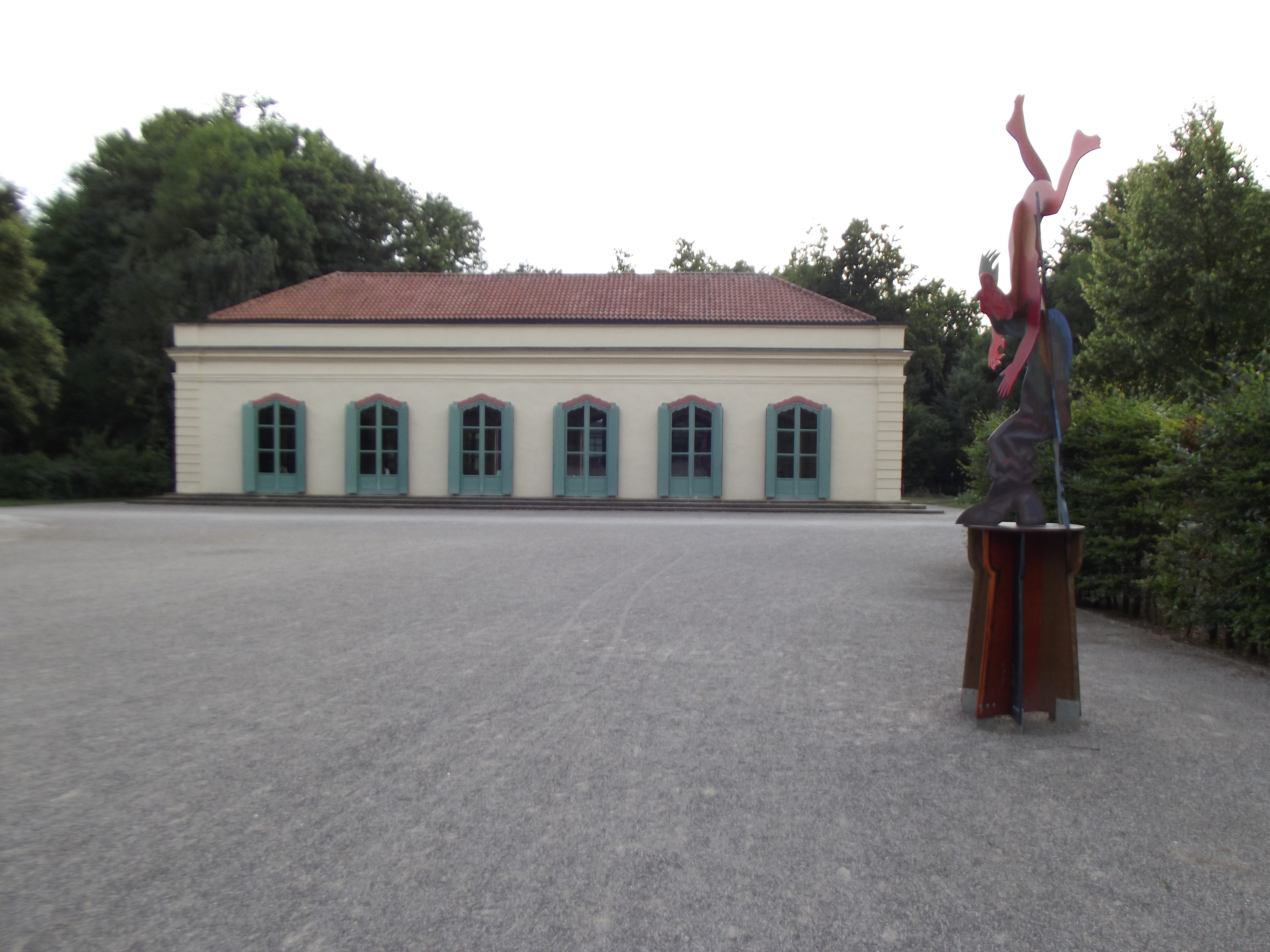|
Charles Paul Ernest, Count Of Bentheim-Steinfurt
Charles Paul Ernest of Bentheim-Steinfurt (30 August 1729 – 30 June 1780) was a Count of Steinfurt. He was the son of the reigning Count Frederick of Bentheim und Steinfurt (1703-1733) and his wife Countess Franziska Charlotte of Lippe-Detmold (1704-1738). His father died young and Charles Paul Ernest became Head of the Bentheim-Steinfurt family in 1733. Initially, he had to share power in the territories of Steinfurt and Alpen with his great-uncle Statius Philip (1668-1749). Under the guardianship of his great-uncle, he enjoyed an excellent education. His Hofmeister Johann Christoph Buch accompanied him on several long journeys to perfect his foreign language skills. In 1748, he married Princess Charlotte Sophia Louise of Nassau-Siegen, the eldest daughter of Frederick William II, Prince of Nassau-Siegen (1706-1734) and Countess Sophie Polyxena Concordia of Sayn-Wittgenstein-Hohenstein (1709-1781). In 1749, his great-uncle and regent Statius Philip died, and Charl ... [...More Info...] [...Related Items...] OR: [Wikipedia] [Google] [Baidu] |
Bentheim-Steinfurt
Bentheim-Steinfurt was a historical county located in northwestern North Rhine-Westphalia in the region surrounding Steinfurt, Germany. Bentheim-Steinfurt was a partition of Bentheim-Bentheim, itself a partition of the County of Bentheim. Bentheim-Steinfurt was partitioned: between itself and Bentheim-Tecklenburg-Rheda in 1606; and between itself and Bentheim-Bentheim in 1643. History Bentheim-Steinfurt and its territories were converted to Lutheranism in 1544 by Count Arnold II. He was succeeded by his less-religious son, Eberwin III. After the latter's early death at age 26, he was succeeded by his infant child, Arnold III, under the regency of Anna of Tecklenburg. Arnold III married Magdalena of Neuenahr in 1576, and he began attempts to properly convert the county to Protestantism. In the autumn of 1587, Lutheran preachers from across Germany were invited to help reform the Counties of Bentheim, Steinfurt, Lingen and Tecklenburg. The new laws were largely modelled on those ... [...More Info...] [...Related Items...] OR: [Wikipedia] [Google] [Baidu] |
Steinfurter Bagno
The Steinfurter Bagno is a park near the town of Burgsteinfurt in the German state of North Rhine-Westphalia. History Amusement park Count Charles Paul Ernest of Bentheim-Steinfurt founded it in 1765 with the intention of creating a summer residence for his family. The initial design adhered to the French garden tradition of imposing strict order and symmetry on the layout. Following Count Louis' succession in 1780, the park saw the addition of various buildings and structures, including the so-called Greece and Egypt, as well as imitations of Oriental and Far-Eastern styles. The oldest surviving layout dates from 1787 and includes 105 buildings, fountains, bridges, statues, islands, gardens, and paths crammed onto a 125-hectare plot. In later years, criticism on the excessive density of objects and architectural styles and the rise of the English garden brought about substantial change to the Bagno. Buildings and other objects were removed, new ones constructed; straight way ... [...More Info...] [...Related Items...] OR: [Wikipedia] [Google] [Baidu] |
1729 Births
Seventeen or 17 may refer to: * 17 (number), the natural number following 16 and preceding 18 * one of the years 17 BC, AD 17, 1917, 2017 Literature Magazines * ''Seventeen'' (American magazine), an American magazine * ''Seventeen'' (Japanese magazine), a Japanese magazine Novels * ''Seventeen'' (Tarkington novel), a 1916 novel by Booth Tarkington *''Seventeen'' (''Sebuntiin''), a 1961 novel by Kenzaburō Ōe * ''Seventeen'' (Serafin novel), a 2004 novel by Shan Serafin Stage and screen Film * ''Seventeen'' (1916 film), an American silent comedy film *''Number Seventeen'', a 1932 film directed by Alfred Hitchcock * ''Seventeen'' (1940 film), an American comedy film *''Eric Soya's '17''' (Danish: ''Sytten''), a 1965 Danish comedy film * ''Seventeen'' (1985 film), a documentary film * ''17 Again'' (film), a 2009 film whose working title was ''17'' * ''Seventeen'' (2019 film), a Spanish drama film Television * ''Seventeen'' (TV drama), a 1994 UK dramatic short starring Chris ... [...More Info...] [...Related Items...] OR: [Wikipedia] [Google] [Baidu] |
Counts Of Steinfurt
Count (feminine: countess) is a historical title of nobility in certain European countries, varying in relative status, generally of middling rank in the hierarchy of nobility. Pine, L. G. ''Titles: How the King Became His Majesty''. New York: Barnes & Noble, 1992. p. 73. . The etymologically related English term "county" denoted the territories associated with the countship. Definition The word ''count'' came into English from the French ''comte'', itself from Latin ''comes''—in its accusative ''comitem''—meaning “companion”, and later “companion of the emperor, delegate of the emperor”. The adjective form of the word is "comital". The British and Irish equivalent is an earl (whose wife is a "countess", for lack of an English term). In the late Roman Empire, the Latin title ''comes'' denoted the high rank of various courtiers and provincial officials, either military or administrative: before Anthemius became emperor in the West in 467, he was a military ''comes ... [...More Info...] [...Related Items...] OR: [Wikipedia] [Google] [Baidu] |
Counts Of Bentheim
Count (feminine: countess) is a historical title of nobility in certain European countries, varying in relative status, generally of middling rank in the hierarchy of nobility. Pine, L. G. ''Titles: How the King Became His Majesty''. New York: Barnes & Noble, 1992. p. 73. . The etymologically related English term "county" denoted the territories associated with the countship. Definition The word ''count'' came into English from the French ''comte'', itself from Latin ''comes''—in its accusative ''comitem''—meaning “companion”, and later “companion of the emperor, delegate of the emperor”. The adjective form of the word is "comital". The British and Irish equivalent is an earl (whose wife is a "countess", for lack of an English term). In the late Roman Empire, the Latin title ''comes'' denoted the high rank of various courtiers and provincial officials, either military or administrative: before Anthemius became emperor in the West in 467, he was a military ''comes ... [...More Info...] [...Related Items...] OR: [Wikipedia] [Google] [Baidu] |
House Of Bentheim
A house is a single-unit residential building. It may range in complexity from a rudimentary hut to a complex structure of wood, masonry, concrete or other material, outfitted with plumbing, electrical, and heating, ventilation, and air conditioning systems.Schoenauer, Norbert (2000). ''6,000 Years of Housing'' (rev. ed.) (New York: W.W. Norton & Company). Houses use a range of different roofing systems to keep precipitation such as rain from getting into the dwelling space. Houses may have doors or locks to secure the dwelling space and protect its inhabitants and contents from burglars or other trespassers. Most conventional modern houses in Western cultures will contain one or more bedrooms and bathrooms, a kitchen or cooking area, and a living room. A house may have a separate dining room, or the eating area may be integrated into another room. Some large houses in North America have a recreation room. In traditional agriculture-oriented societies, domestic animals such ... [...More Info...] [...Related Items...] OR: [Wikipedia] [Google] [Baidu] |
Louis William Geldricus Ernest Of Bentheim And Steinfurt
Louis William Geldricus Ernest of Bentheim and Steinfurt (1 October 1756 at Steinfurt Castle – 20 August 1817) was a member of the House of Bentheim-Steinfurt. He was an Imperial Count and was raised to Prince in 1817. He was the second son of Count Charles Paul Ernest and his wife, Sophie Charlotte of Nassau-Siegen, the eldest daughter of Frederick William II, Prince of Nassau-Siegen. As his brother Charles (13 February 1753 – 5 September 1772) died before their father, Louis succeeded in 1780 as Count of Steinfurt. On 17 July 1776, he married Princess Juliane Wilhelmine of Schleswig-Holstein-Sonderburg-Glücksburg (30 April 1754 – 14 September 1823), with whom he had the following eight children: * Henriette Sophie (10 June 1777 – 8 December 1851), married in 1802 to Karl, 2nd Prince of Solms-Hohensolms-Lich (1762–1807) * Christian (1778–1789) * Alexius Alexius is the Latinized form of the given name Alexios ( el, Αλέξιος, polytonic , " ... [...More Info...] [...Related Items...] OR: [Wikipedia] [Google] [Baidu] |
Caroline Of Bentheim-Steinfurt
Caroline may refer to: People * Caroline (given name), a feminine given name * J. C. Caroline (born 1933), American college and National Football League player * Jordan Caroline (born 1996), American (men's) basketball player Places Antarctica * Caroline Bluff, a headland in the South Shetland Islands Australia *Caroline, South Australia, a locality in the District Council of Grant * Hundred of Caroline, a cadastral sub-unit of the County of Grey in South Australia Canada *Caroline, Alberta, a village Kiribati *Caroline Island, an uninhabited coral atoll in the central Pacific Micronesia *Caroline Islands an archipelago in the western Pacific, northeast of New Guinea *Caroline Plate, a small tectonic plate north of New Guinea United States *Caroline, New York, a town * Caroline, Ohio, an unincorporated community * Caroline, Wisconsin, an unincorporated census-designated place *Caroline County, Maryland *Caroline County, Virginia *Fort Caroline, the first French colony in what is ... [...More Info...] [...Related Items...] OR: [Wikipedia] [Google] [Baidu] |
Mannheim
Mannheim (; Palatine German: or ), officially the University City of Mannheim (german: Universitätsstadt Mannheim), is the second-largest city in the German state of Baden-Württemberg after the state capital of Stuttgart, and Germany's 21st-largest city, with a 2020 population of 309,119 inhabitants. The city is the cultural and economic centre of the Rhine-Neckar Metropolitan Region, Germany's seventh-largest metropolitan region with nearly 2.4 million inhabitants and over 900,000 employees. Mannheim is located at the confluence of the Rhine and the Neckar in the Kurpfalz (Electoral Palatinate) region of northwestern Baden-Württemberg. The city lies in the Upper Rhine Plain, Germany's warmest region. Together with Hamburg, Mannheim is the only city bordering two other federal states. It forms a continuous conurbation of around 480,000 inhabitants with Ludwigshafen am Rhein in the neighbouring state of Rhineland-Palatinate, on the other side of the Rhine. Some northe ... [...More Info...] [...Related Items...] OR: [Wikipedia] [Google] [Baidu] |
Incunable
In the history of printing, an incunable or incunabulum (plural incunables or incunabula, respectively), is a book, pamphlet, or broadside that was printed in the earliest stages of printing in Europe, up to the year 1500. Incunabula were produced before the printing press became widespread on the continent and are distinct from manuscripts, which are documents written by hand. Some authorities include block books from the same time period as incunabula, whereas others limit the term to works printed using movable type. there are about 30,000 distinct incunable editions known. The probable number of surviving individual copies is much higher, estimated at around 125,000 in Germany alone. Through statistical analysis, it is estimated that the number of lost editions is at least 20,000. Around 550,000 copies of around 27,500 different works have been preserved worldwide. Terminology Incunable is the anglicised form of ''incunabulum'', reconstructed singular of Latin ''i ... [...More Info...] [...Related Items...] OR: [Wikipedia] [Google] [Baidu] |
Lippe-Detmold
Lippe (later Lippe-Detmold and then again Lippe) was a historical state in Germany, ruled by the House of Lippe. It was located between the Weser river and the southeast part of the Teutoburg Forest. It was founded in the 1640s under a separate branch of the House of Lippe. In 1910 it had an area of 1215 Kmq and over 150,000 inhabitants. History The founder of what would become the County of Lippe (1528–1789), then the Principality of Lippe (1789–1918) was Bernard I, Lord of Lippe, Bernhard I, who received a grant of territory from Lothair II, Holy Roman Emperor, Lothair III in 1123. Bernhard I assumed the title of ''Edler Herr zu Lippe'' ("Noble Lord at Lippe"). The history of the dynasty and its further acquisitions of land really began with Bernard II, Lord of Lippe, Bernard II. His territory was probably formed out of land he acquired on the destruction of the Duchy of Saxony following the demise of Henry the Lion in 1180. From 1196 to 1666 the descendants of Bernard I ... [...More Info...] [...Related Items...] OR: [Wikipedia] [Google] [Baidu] |
Voltaire
François-Marie Arouet (; 21 November 169430 May 1778) was a French Age of Enlightenment, Enlightenment writer, historian, and philosopher. Known by his ''Pen name, nom de plume'' M. de Voltaire (; also ; ), he was famous for his wit, and his criticism of Christianity—especially Criticism of the Catholic Church, of the Roman Catholic Church—and of slavery. Voltaire was an advocate of freedom of speech, freedom of religion, and separation of church and state. Voltaire was a versatile and prolific writer, producing works in almost every literary form, including stageplay, plays, poems, novels, essays, histories, and scientific Exposition (narrative), expositions. He wrote more than 20,000 letters and 2,000 books and pamphlets. Voltaire was one of the first authors to become renowned and commercially successful internationally. He was an outspoken advocate of civil liberties and was at constant risk from the strict censorship laws of the Catholic French monarchy. His polemics ... [...More Info...] [...Related Items...] OR: [Wikipedia] [Google] [Baidu] |








